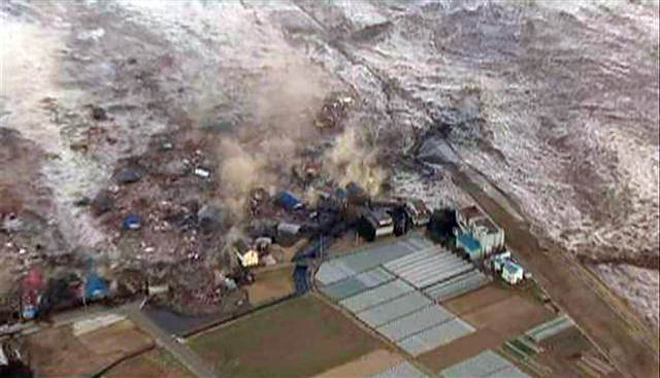The operator of a troubled nuclear power plant in north-eastern Japan resumed efforts Tuesday to restore power at reactors a day after gray smoke from a reactor building halted their efforts, the government said. Tokyo Electric Power Co (TEPCO) did not expect the smoke to prevent their work, dpa reported according to public broadcaster NHK.
Meanwhile, TEPCO said radioactive substances were detected in seawater near the Fukushima 1 nuclear power plant, which was damaged by the March 11 earthquake and tsunami.
Japanese military vehicles and a Tokyo Fire Department trucks were to resume their cooling operation, which involves showering water over overheating reactors 3 and 4 after their efforts were suspended due to the smoke.
The smoke seen pouring from the reactor 3 building forced workers to suspend operations Monday aimed at restoring power at the six-reactor plant, 250 kilometres north-east of Tokyo.
Later it appeared to have stopped, but "what seems to be white hazy smoke" was still rising from the building, Kyodo News reported early Tuesday.
Smoke was also seen at reactor 2, but the plant's operator said it was believed to be steam. Kyodo reported "white-steam like vapor" was still coming out from reactor 2 in the morning.
Defence Minister Toshimi Kitazawa told reporters the smoke from reactor 3 was likely from burning debris while the "smoke" from reactor 2 was steam.
Steam is produced when the water cools the overheating rods of nuclear material.
Two armoured vehicles were to be mobilized Monday to remove rubble at the plant, which has hampered the cooling operations.
Two German-made pumping vehicles are to join the efforts. The M52 Multi-Z, made by Putzmeister Holding GmbH can dump 150 tons of water per hour from a height of 50 metres.
External power was connected late Monday to reactor 1, TEPCO said. External power is now available for reactors 1, 2, 5 and 6.
But the reactors are still in a "tough" situation, Industry Minister Banri Kaieda said, while Prime Minister Naoto Kan told reporters the efforts to cope with the nuclear crisis were "moving forward slowly."
Officials of the US Nuclear Regulatory Commission said Monday that conditions at the Fukushima nuclear power plant seem to have improved, though frantic attempts to regain control the stricken reactors are continuing.
"The fact that off-site power is close to being available for use by plant equipment is the first optimistic sign that things could be turning around," Bill Borchardt, head of the commission's operations, said in a public meeting Monday in Washington.
Meanwhile, TEPCO said radioactive iodine at levels 126.7 times higher than the legal limit and radioactive cesium 24.8 times higher were detected in seawater near the plant.
That was believed to have been caused by the nuclear accident, company officials said.
The government told four prefectures - Fukushima, Ibaraki, Tochigi, Gunma - to restrict shipments of spinach and "kakina," a leafy vegetable, as detected levels of radioactive substances in the produce surpassed legal limits. Tokyo also told Fukushima to suspend shipments of raw milk.






